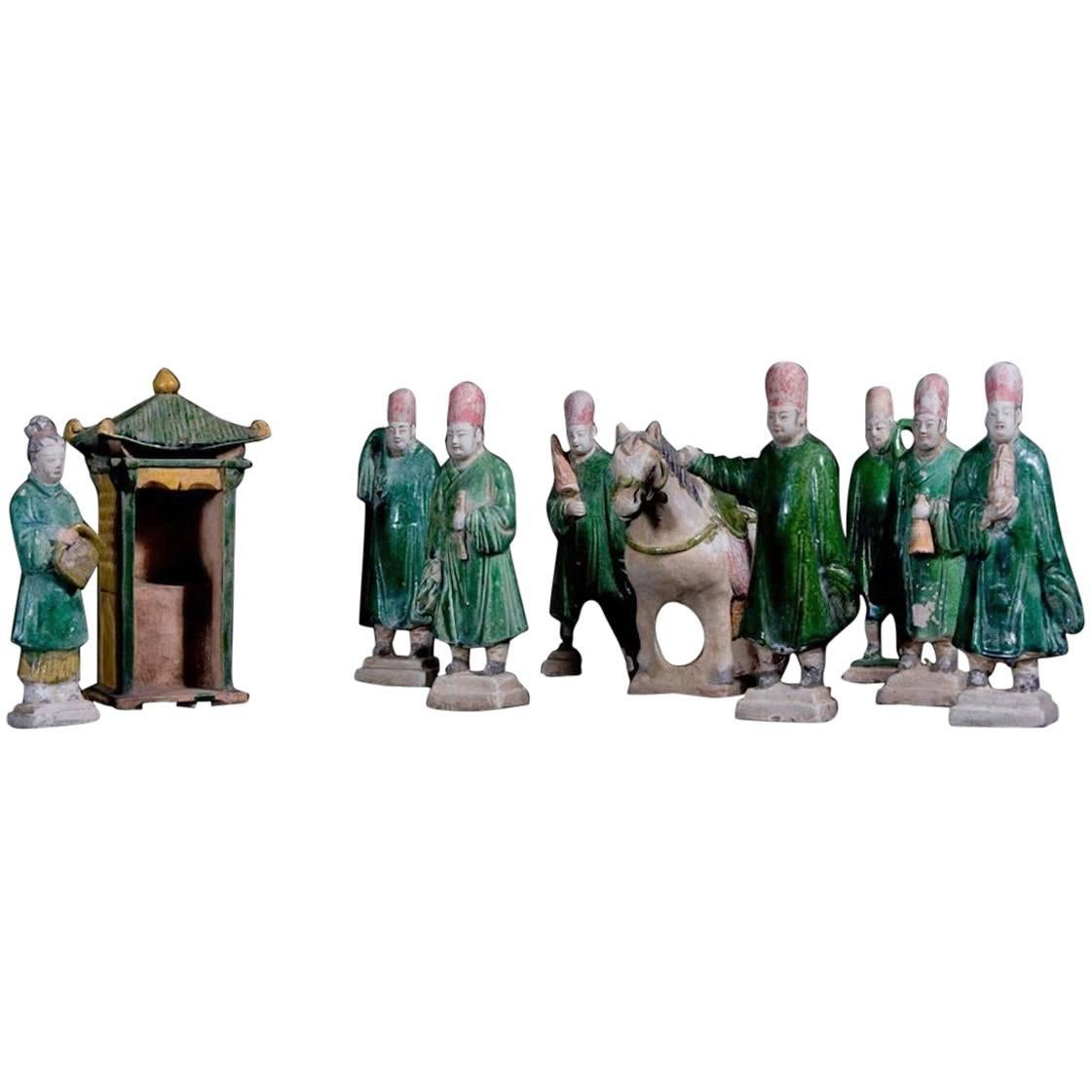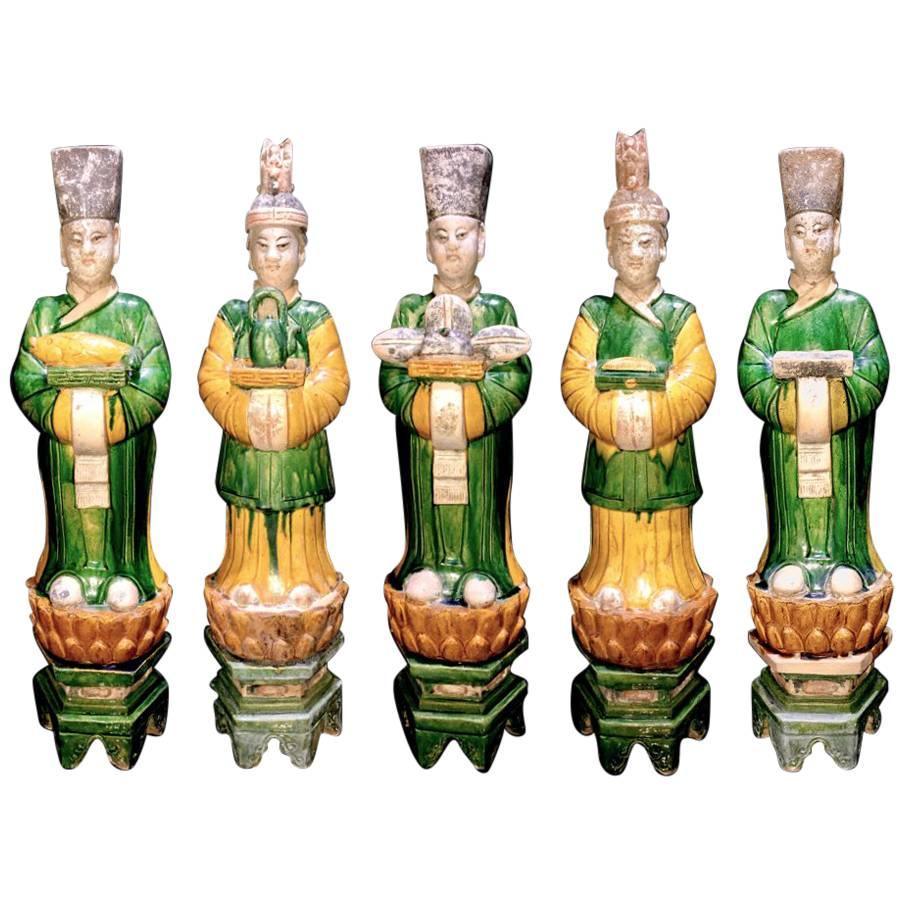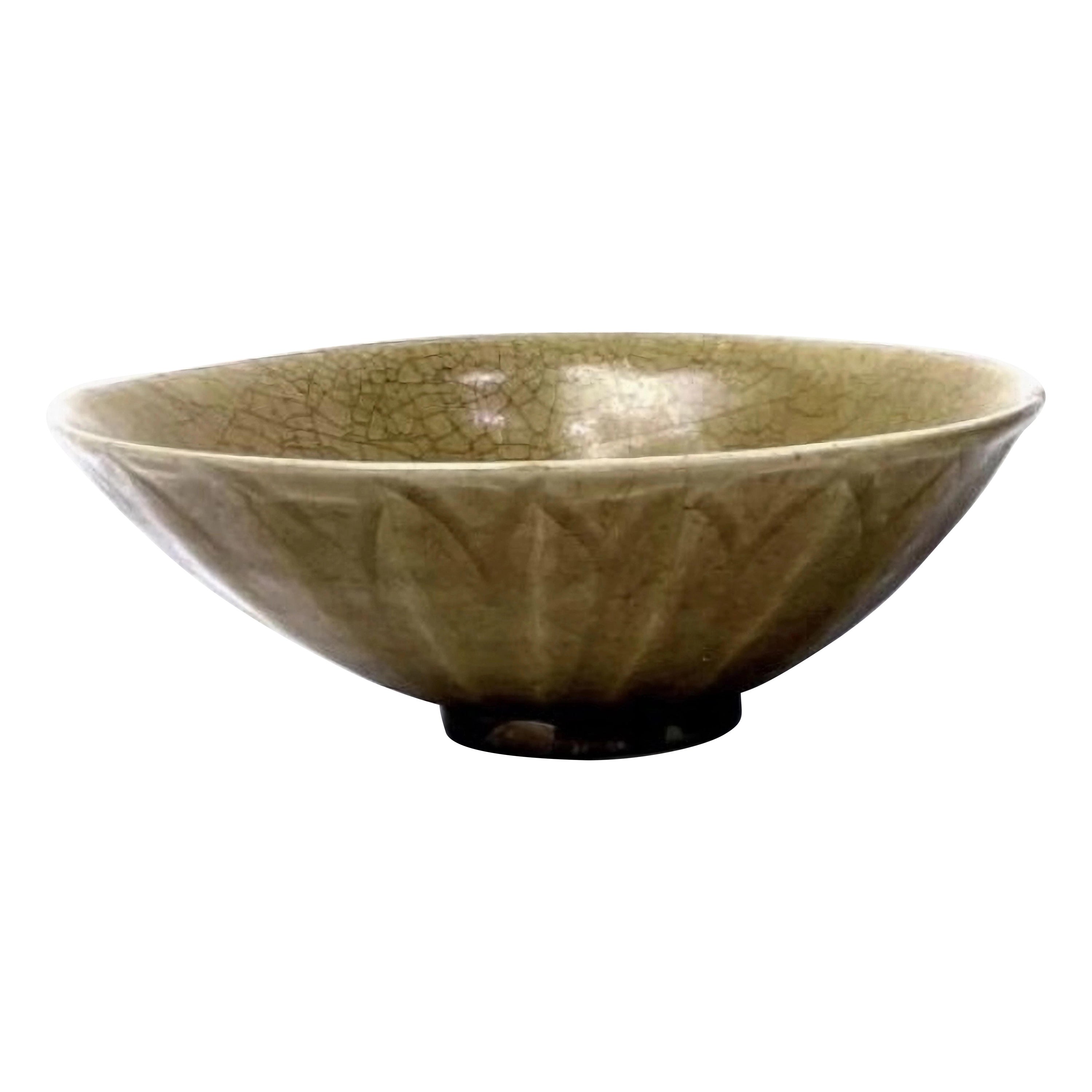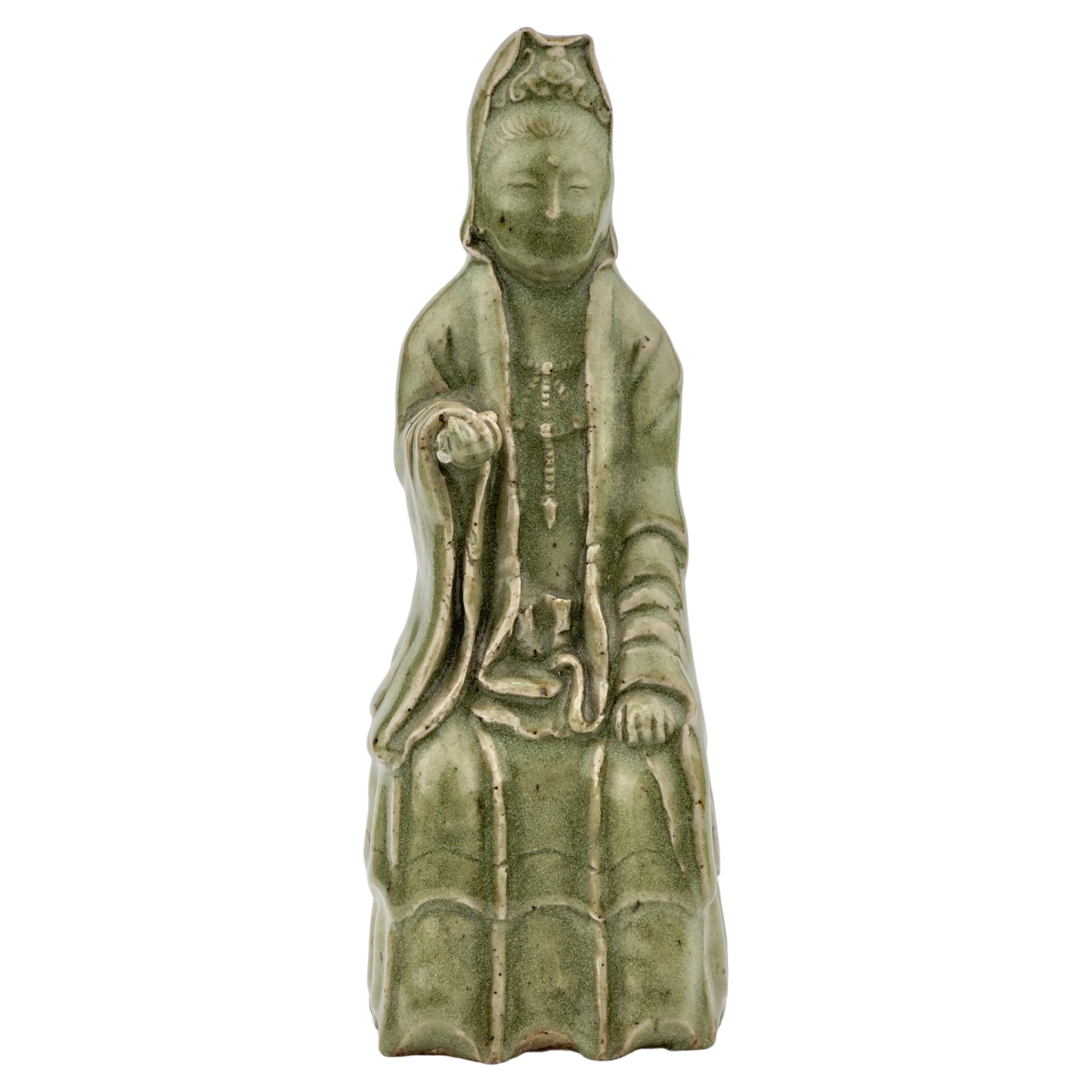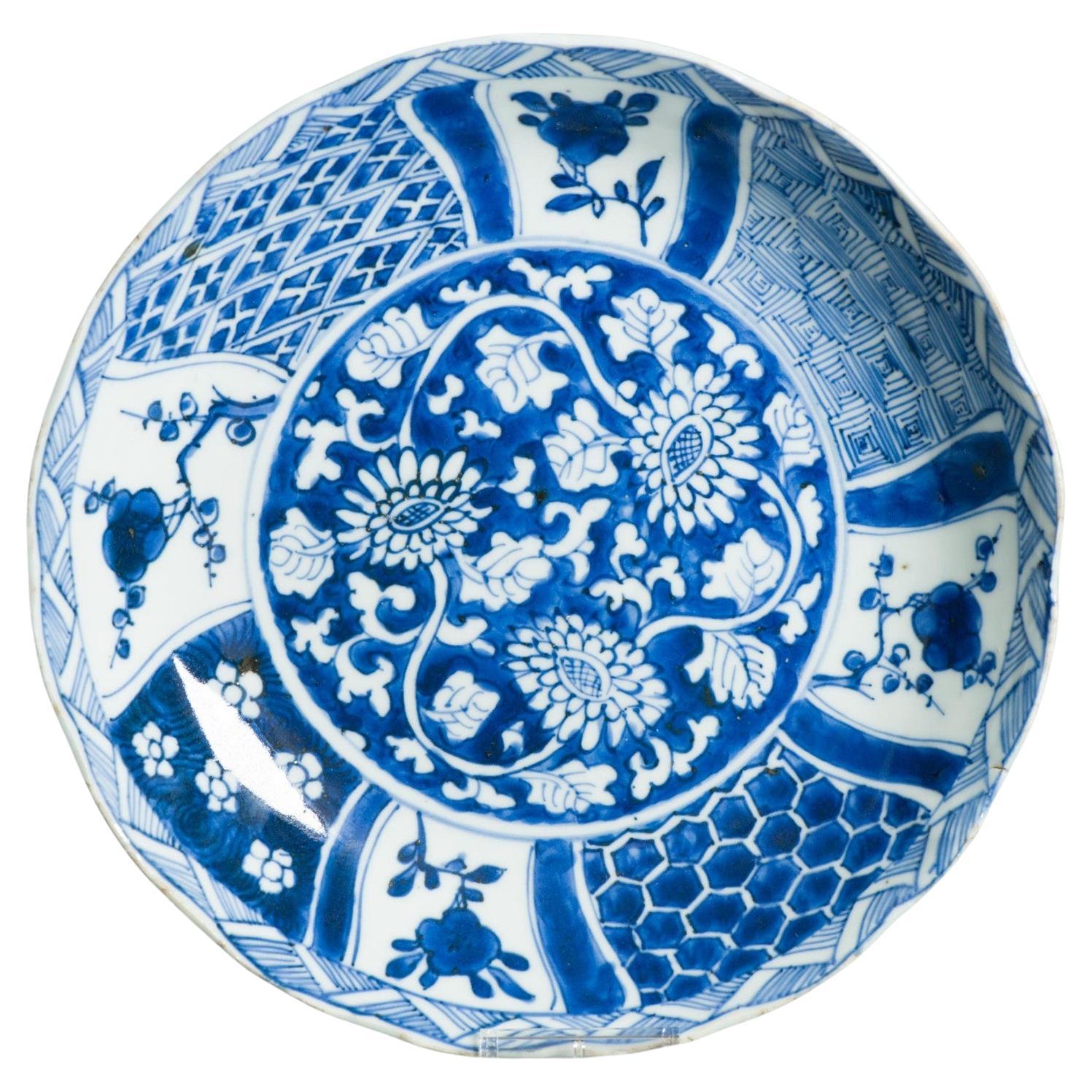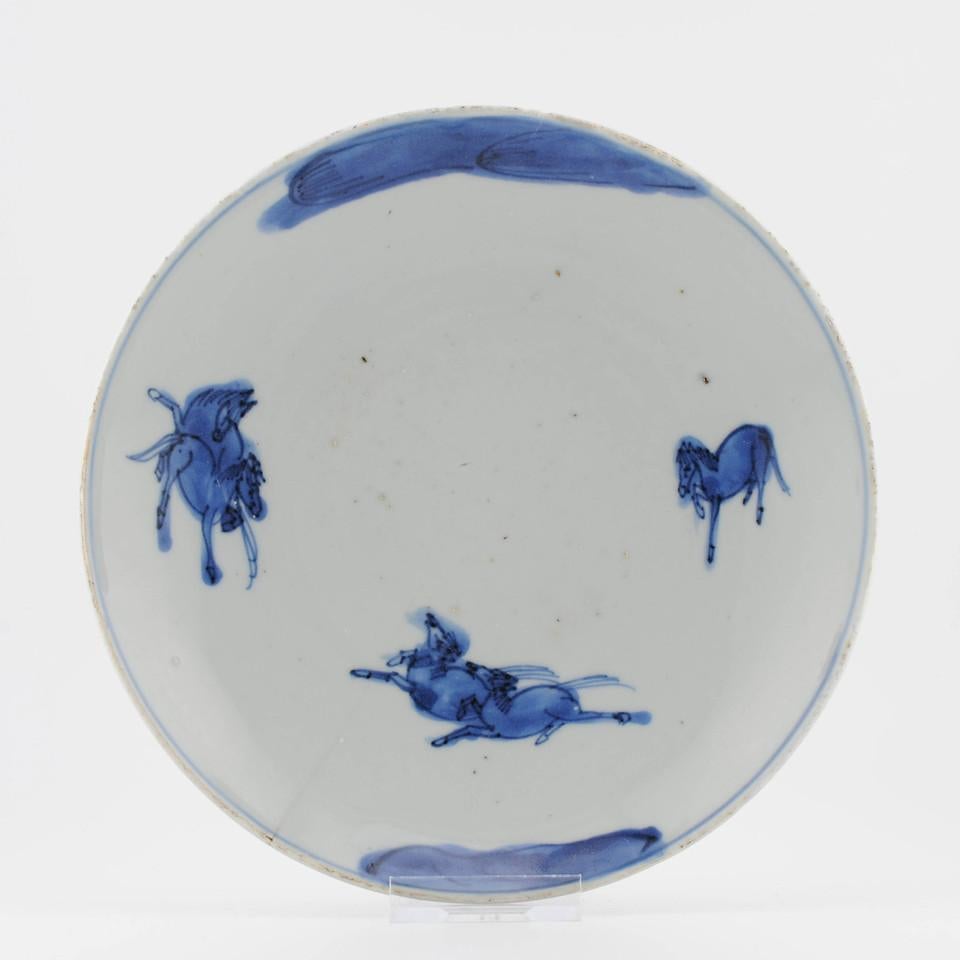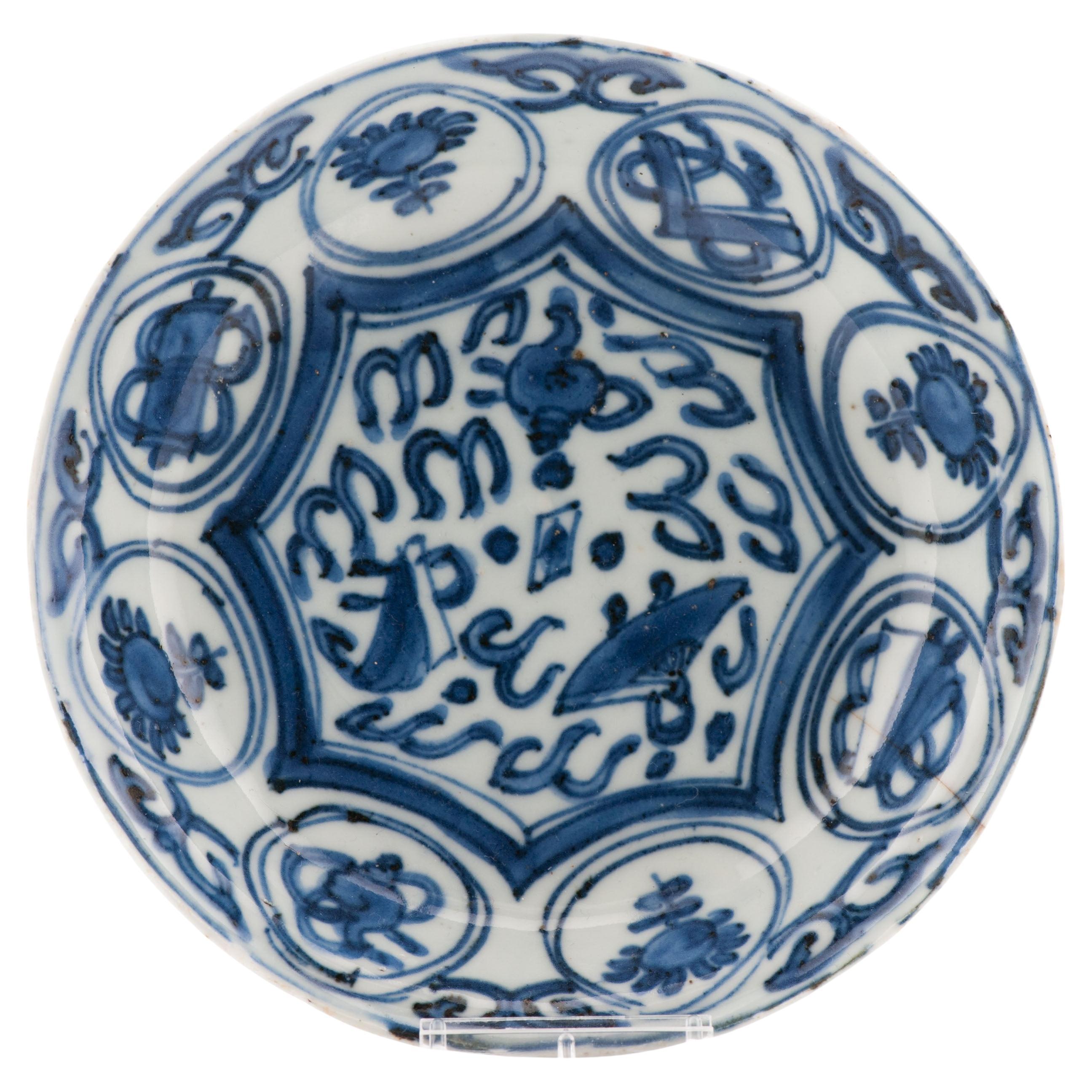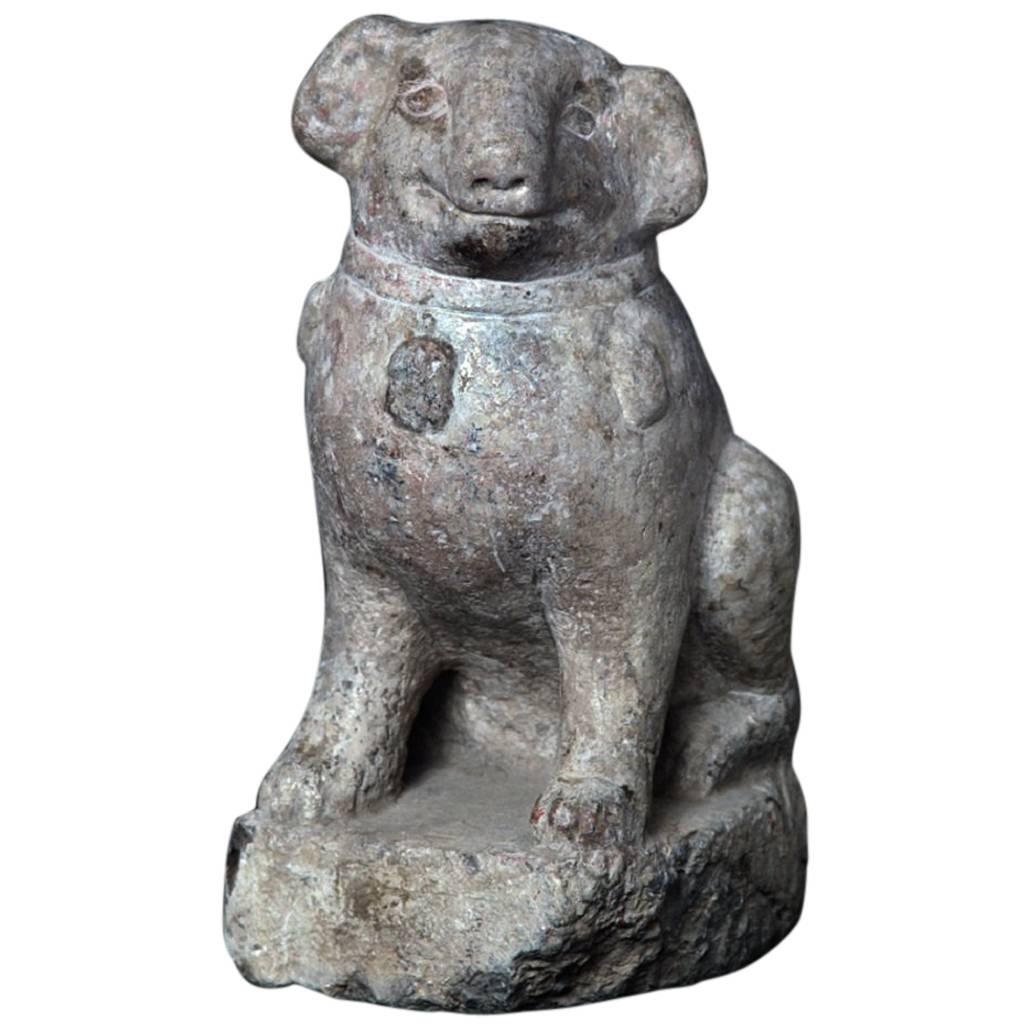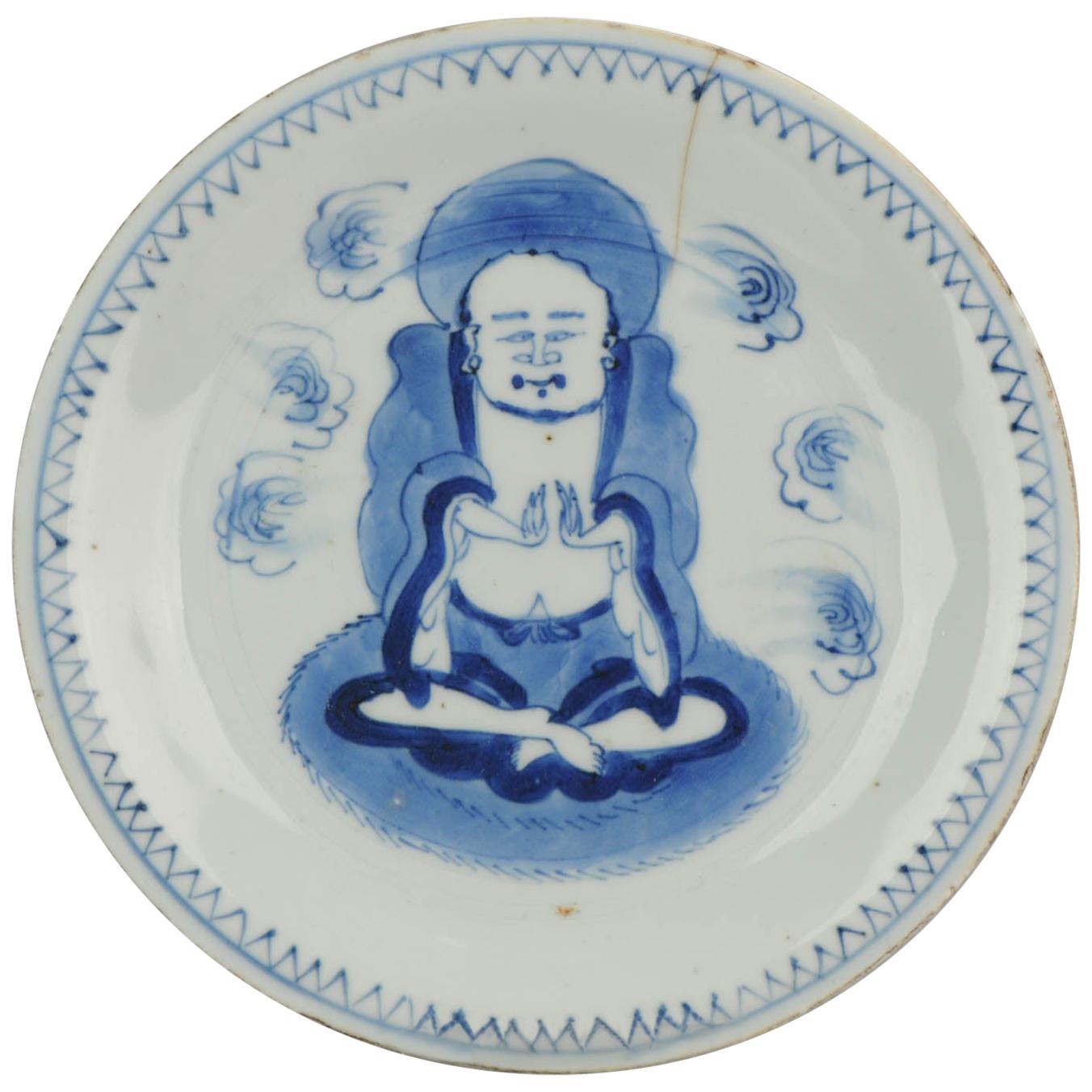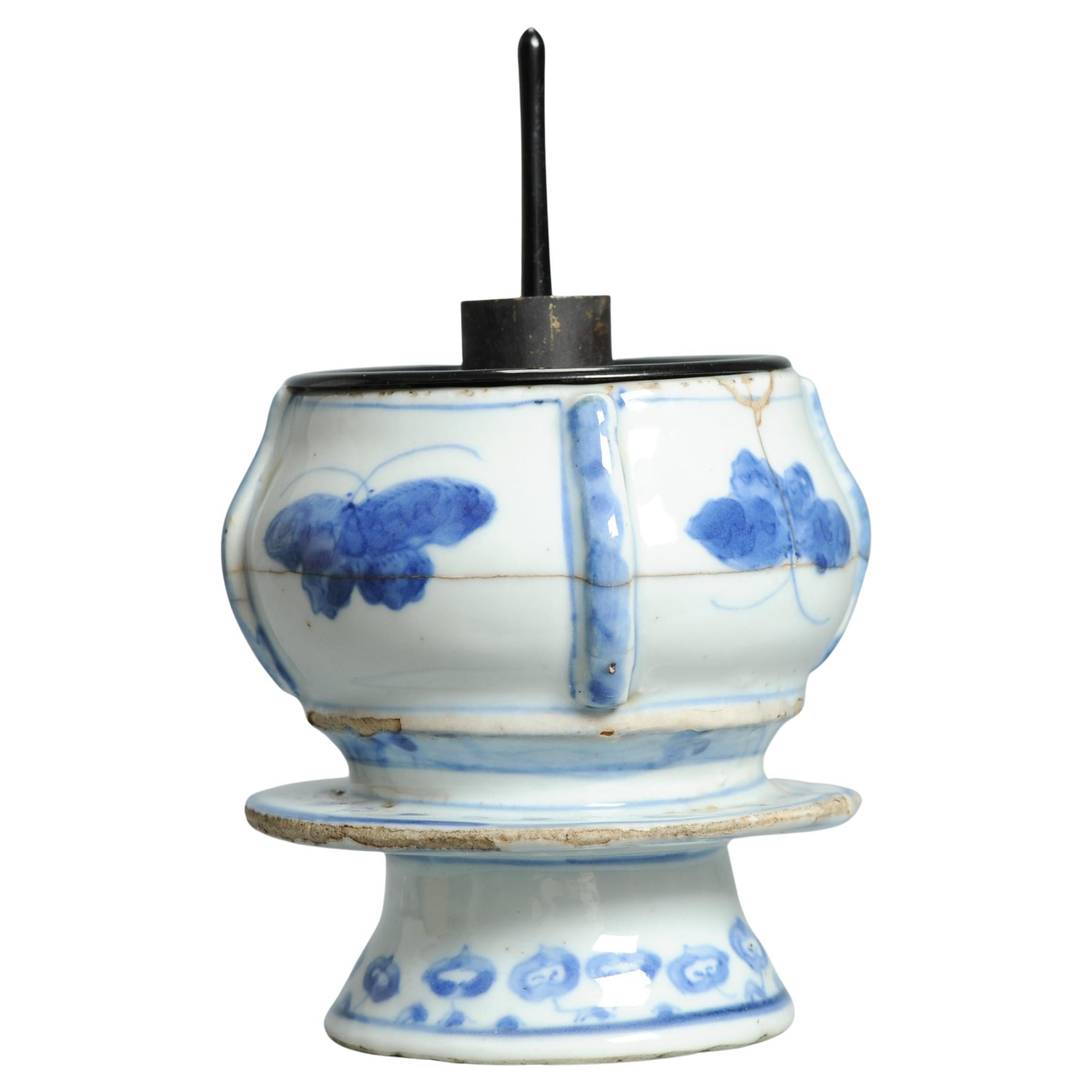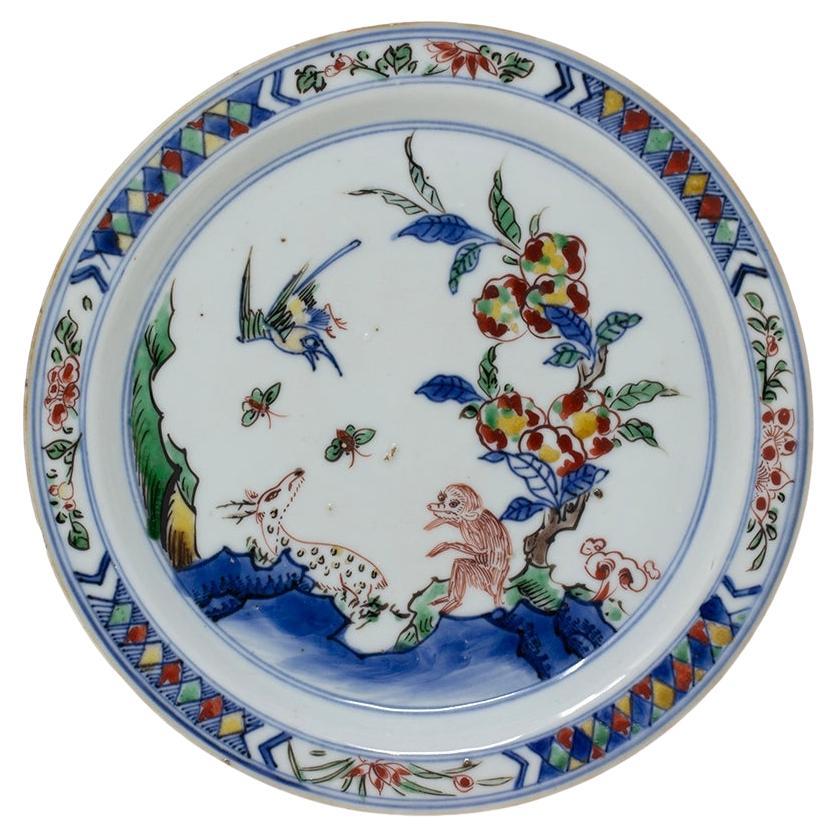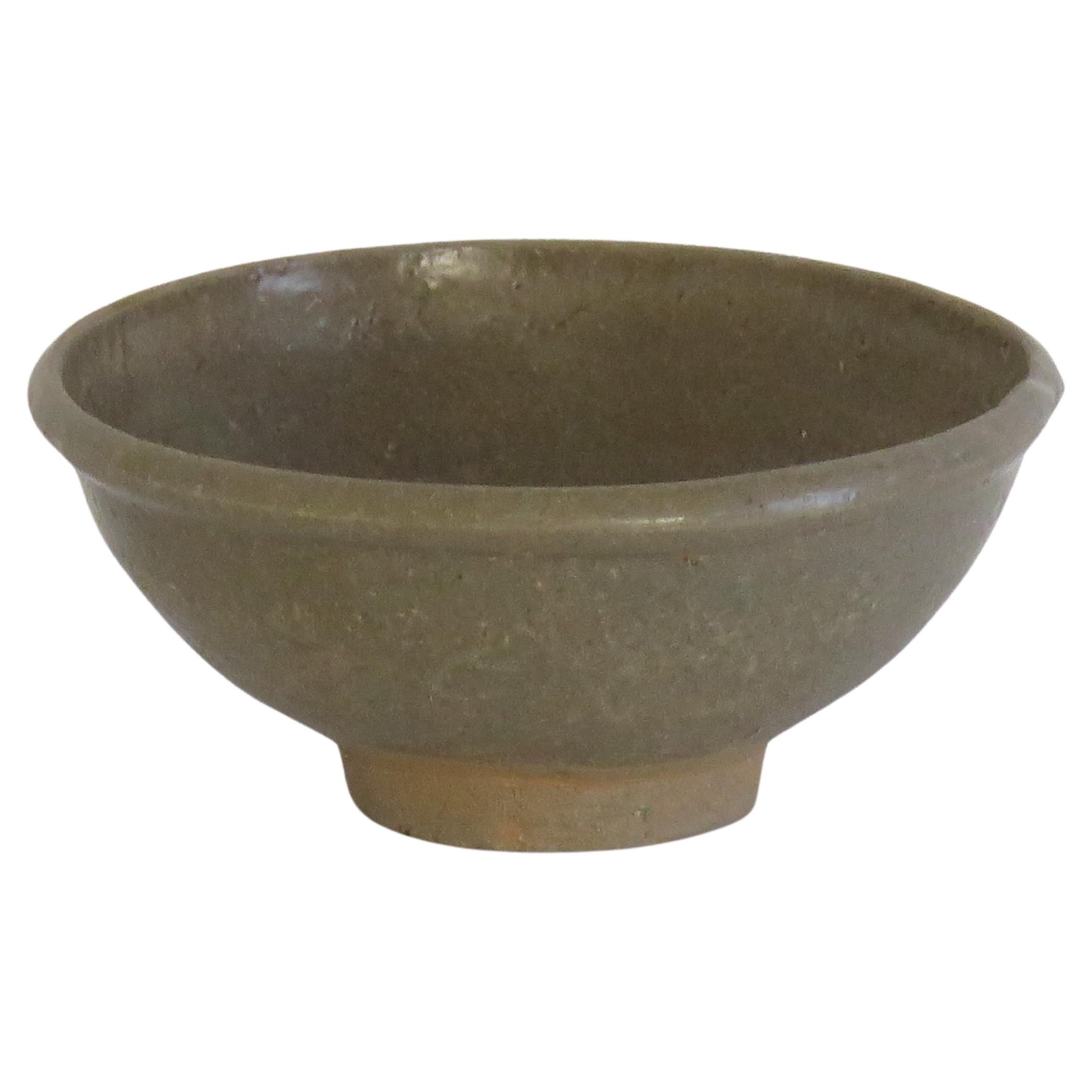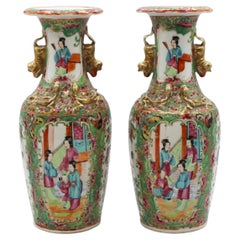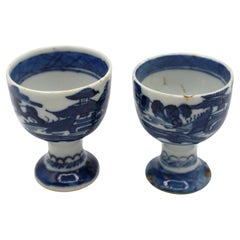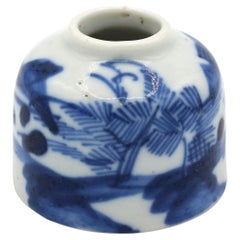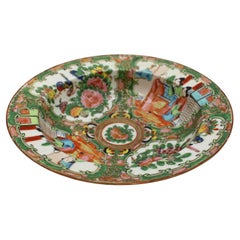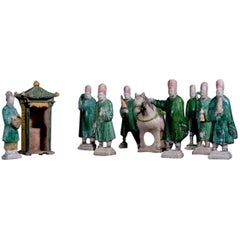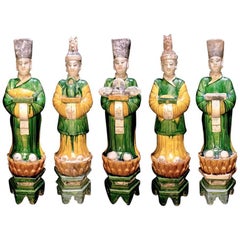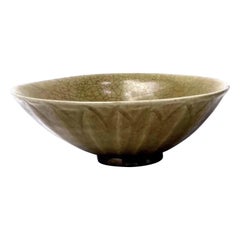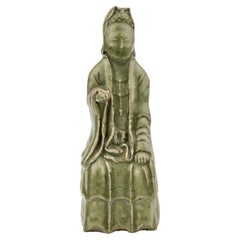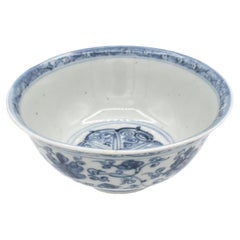
1368-1644 Ming Dynasty Chinese Export Porcelain Bowl
View Similar Items
Want more images or videos?
Request additional images or videos from the seller
1 of 7
1368-1644 Ming Dynasty Chinese Export Porcelain Bowl
$900List Price
About the Item
- Dimensions:Height: 2.63 in (6.69 cm)Diameter: 6.07 in (15.42 cm)
- Style:Ming (Of the Period)
- Materials and Techniques:
- Place of Origin:
- Period:
- Date of Manufacture:1368-1644
- Condition:Wear consistent with age and use. Fine condition with a few frits & original kiln flaws & foot rim chip.
- Seller Location:Chapel Hill, NC
- Reference Number:Seller: WCI-8816z1stDibs: LU6458241321792
About the Seller
4.9
Platinum Seller
Premium sellers with a 4.7+ rating and 24-hour response times
Established in 1930
1stDibs seller since 2022
340 sales on 1stDibs
Typical response time: 1 hour
Authenticity Guarantee
In the unlikely event there’s an issue with an item’s authenticity, contact us within 1 year for a full refund. DetailsMoney-Back Guarantee
If your item is not as described, is damaged in transit, or does not arrive, contact us within 7 days for a full refund. Details24-Hour Cancellation
You have a 24-hour grace period in which to reconsider your purchase, with no questions asked.Vetted Professional Sellers
Our world-class sellers must adhere to strict standards for service and quality, maintaining the integrity of our listings.Price-Match Guarantee
If you find that a seller listed the same item for a lower price elsewhere, we’ll match it.Trusted Global Delivery
Our best-in-class carrier network provides specialized shipping options worldwide, including custom delivery.More From This Seller
View AllPair of Mid-19th Century Chinese Export Porcelain Rose Medallion Vases
By Imari Porcelain
Located in Chapel Hill, NC
Mid-19th century pair of Chinese export porcelain rose medallion vases. Handsome with dragon mounted shoulders & foo lion handles. Fine identical decoration on all sides. Foo lion on...
Category
Antique Mid-19th Century Chinese Chinese Export Ceramics
Materials
Porcelain
Early 19th Century Chinese Export Blue Canton Pair of Egg Cups
Located in Chapel Hill, NC
Early 19th century Chinese Export Blue Canton pair of egg cups. Finely decorated. One with 3/4" hairline. Frits under glaze on both bases; minute frits at rims. 2.25" h., 1.75" dia.
...
Category
Antique Early 19th Century Chinese Chinese Export Ceramics
Materials
Ceramic
Circa 1860 Chinese Blue & White Porcelain Brush Washer
Located in Chapel Hill, NC
Circa 1860 Chinese blue & white domed form brush washer. Porcelain. From the Qing Dynasty artist or scholar's table. Landscape decoration.
2" dia., 1 5/8" h.
We are a family busines...
Category
Antique 1860s Chinese Qing Ceramics
Materials
Porcelain
C. 1880s Chinese Export Porcelain Rose Medallion Soup Bowl
Located in Chapel Hill, NC
Circa 1880s Chinese export porcelain rose medallion soup bowl. Deep rim bowl. Well decorated. Minor rubbing to edge given age & use.
9" dia. 2" h.
We are a family business that has ...
Category
Antique Late 19th Century Chinese Chinese Export Porcelain
Materials
Porcelain
Circa 1680 Chinese Export Porcelain Family Rice Bowl
Located in Chapel Hill, NC
Circa 1680 porcelain family rice bowl, Chinese export to SE Asia. Early Qing Dynasty. Underglaze blue esoteric Buddhist symbol (Vajrayana, Mantroyana, etc.) traditions. Symbols is Sa...
Category
Antique 1680s Chinese Chinese Export Porcelain
Materials
Porcelain
$360 Sale Price
20% Off
1970s, Chinese Mud Figure of Woman
Located in Chapel Hill, NC
Chinese, circa 1970s, mud figure from Wanjiang, Guangong province. A lovely woman in a winter fur trimmed coat holding a rabbit with a goat at her feet. Fin...
Category
Late 20th Century Ceramics
Materials
Ceramic
$75 Sale Price
40% Off
You May Also Like
Impressive Terracotta Funerary Procession - Ming Dynasty, China '1368-1644 AD'
Located in San Pedro Garza Garcia, Nuevo Leon
Impressive Funeral Ensamble of 10 Terracotta Glazed Figures in green and caramel colors depicting a votive procession with a palanquin, his four carriers, a horse, a stableman, two musicians, and an offering carrier.
This ensemble is accompanied by a Certificate of Authenticity, and Certificate of Expertise by Jean-Yves Nathan - Specialist in Asian Arts for the CEDEA (The European Confederation of Art Experts).
Burial figurines of graceful dancers, mystical beasts, and everyday objects reveal both how people in early China approached death and how they lived. Since people viewed the afterlife as an extension of worldly life, these figurines, called mingqi, sometimes referred as “spirit utensils” or “vessels of ghosts” disclose details of routine existence and provide insights into belief systems over a thousand-year period.
The Ming dynasty was the ruling dynasty of China – then known as the Empire of the Great Ming – for 276 years (1368–1644 AD). Founded by Chu Yuan-chang, the rebel leader that was successful in removing the mongols from the throne. Chinese control was re-asserted in China and eastern Asia. Literature became more important, schools were created, and the justice system was reformed. The Ming dynasty is described by some as "one of the greatest eras of orderly government and social stability in human history,” was the last imperial dynasty in China ruled by ethnic Han Chinese.
The practice of burying ceramic objects with the deceased went into decline from the 10th to the 14th Century AD. There was a revival in placing miniature representations of glazed terracotta objects such a furniture, food offerings, horses, miniature statues...
Category
Antique 15th Century and Earlier Chinese Ming Antiquities
Materials
Terracotta
Superb Set of 5 Elegant Court Attendants, Ming Dynasty, 1368-1644 AD TL Tested
Located in San Pedro Garza Garcia, Nuevo Leon
A stunning set of 5 graceful terracotta figurines from the Ming Dynasty '1368-1644' AD. These elegant attendants are standing on a yellow glazed lotus flower over a high hexagonal green plinth and wear fine robes in matching green and yellow glazes. The unglazed areas have pigmented colors in red, black and white. Each is carrying essential offerings for the royal family. The head is detachable as often seen on the larger figures from this period. Meticulously detailed facial expressions have been hand-painted.
Condition: Mint, finely preserved glaze and pigment, undamaged and no repairs.
Provenance: Ex. Danish Collection.
This set is guaranteed authentic and comes with a Certificate of Authenticity and TL Test from Laboratory Kotalla in Germany (The Oldest Thermoluminescence Testing Laboratory in the World).
Dimensions: Average 54 H cms
Burial figurines of graceful dancers, mystical beasts, and everyday objects reveal both how people in early China approached death and how they lived. Since people viewed the afterlife as an extension of worldly life, these figurines, called mingqi, sometimes referred as “spirit utensils” or “vessels of ghosts” disclose details of routine existence and provide insights into belief systems over a thousand-year period.
The Ming dynasty was the ruling dynasty of China – then known as the Empire of the Great Ming – for 276 years (1368–1644 AD). Founded by Chu Yuan-chang, the rebel leader that was successful in removing the mongols from the throne. Chinese control was re-asserted in China and eastern Asia. Literature became more important, schools were created, and the justice system was reformed. The Ming dynasty is described by some as "one of the greatest eras of orderly government and social stability in human history,” was the last imperial dynasty in China ruled by ethnic Han Chinese.
The practice of burying ceramic objects with the deceased went into decline from the 10th to the 14th Century AD. There was a revival in placing miniature representations of glazed terracotta objects such a furniture, food offerings, horses, miniature statues...
Category
Antique 15th Century and Earlier Chinese Ming Antiquities
Materials
Terracotta
A Chinese Longquan Celadon Lotus Bowl, Ming Dynasty
Located in ARMADALE, VIC
A Chinese Longquan Celadon Lotus Bowl, Ming Dynasty
Diameter: 16.7 cm Height: 5.5 cm
Provenance: The Collection of Dr. John Yu AC
Dr. Yu was the Foundi...
Category
Antique 15th Century and Earlier Chinese Ming Ceramics
Materials
Ceramic
$1,575 Sale Price
30% Off
Longquan Celadon Figurine, Ming Dynasty (1368-1644)
Located in seoul, KR
This sculpture is a Longquan celadon from the Ming Dynasty, renowned for its rich and jade-like green glaze. The figurine is likely a representation of a Buddhist deity or a revered scholar, showcasing the calm aesthetic expressions and graceful contours prevalent during the era. The spectrum of celadon glaze ranges from a dense grey stoneware to a nearly white porcelain texture, with unglazed parts revealing a terracotta brown upon firing. Such pieces were often part of household altars, reflecting the era's spiritual devotion. This artifact would be a treasured exhibit in any museum's Asian art collection, symbolizing both religious reverence and artistic excellence.
Period: Ming Dynasty (1368-1644)
Region: Longquan, China
Medium: Stoneware - Celadon glazed, with a range from heavy grey to almost white porcelain-like material
Type: Sculpture
Height : 24.5 cm
Provenance : Acquired in 1999, Hongkong
* Ming Dynasty Longquan Celadon
Longquan celadon from the Ming Dynasty typically exhibits a more robust and heavier stoneware body compared to its Song Dynasty predecessors. The Ming era saw an evolution in celadon glaze, achieving a wider spectrum of green hues, from olive to bluish-greens. Ming celadons...
Category
Antique 15th Century and Earlier Hong Kong Ming Antiquities
Materials
Celadon
Antique Ming 1620-1644 Chinese Porcelain Kosometsuke Reverse Decorated Plate
Located in Amsterdam, Noord Holland
A Chinese blue and white porcelain Dish of beautiful shape and design with moulded rim. With a central reverse decorated scene of flowers. The border with compartments of flowers and...
Category
Antique 17th Century Chinese Ming Ceramics
Materials
Porcelain
Antique Ming 1620-1644 Chinese Porcelain Kosometsuke 5 Horses Plate Tianqi
Located in Amsterdam, Noord Holland
A Chinese blue and white porcelain Dish of beautiful shape and design. Central scene of 5 horses.
Early 17th century, marked at base.
In symbolism a horse is a wish for a Good job. ...
Category
Antique 17th Century Chinese Ming Ceramics
Materials
Porcelain
Recently Viewed
View AllMore Ways To Browse
Ming Dynasty Bowl
Chinese Export Footed Bowl Porcelain
Japanese Edo Period Imari
Antique Chinese Fan
Early Satsuma
Chinese Export Qianlong
Japanese Sake
Qianlong Famille Rose
Old Imari
Satsuma Earthenware
Kutani Meiji
Chinese Dragon And Phoenix
Chinese And Porcelain And Phoenix
Chinese Porcelain Phoenix
Iron Red Chinese Porcelain
Large Japanese Fan
Antique Chinese Blue And White Bowl
Japanese Shoji
